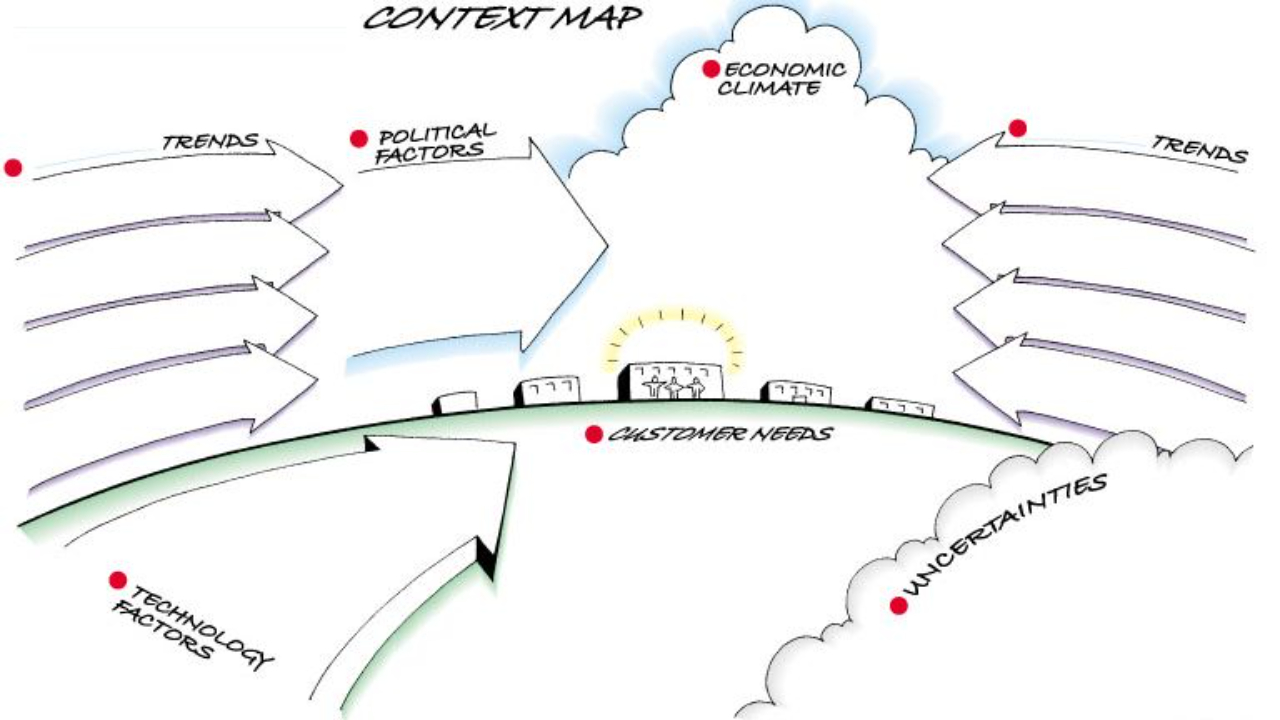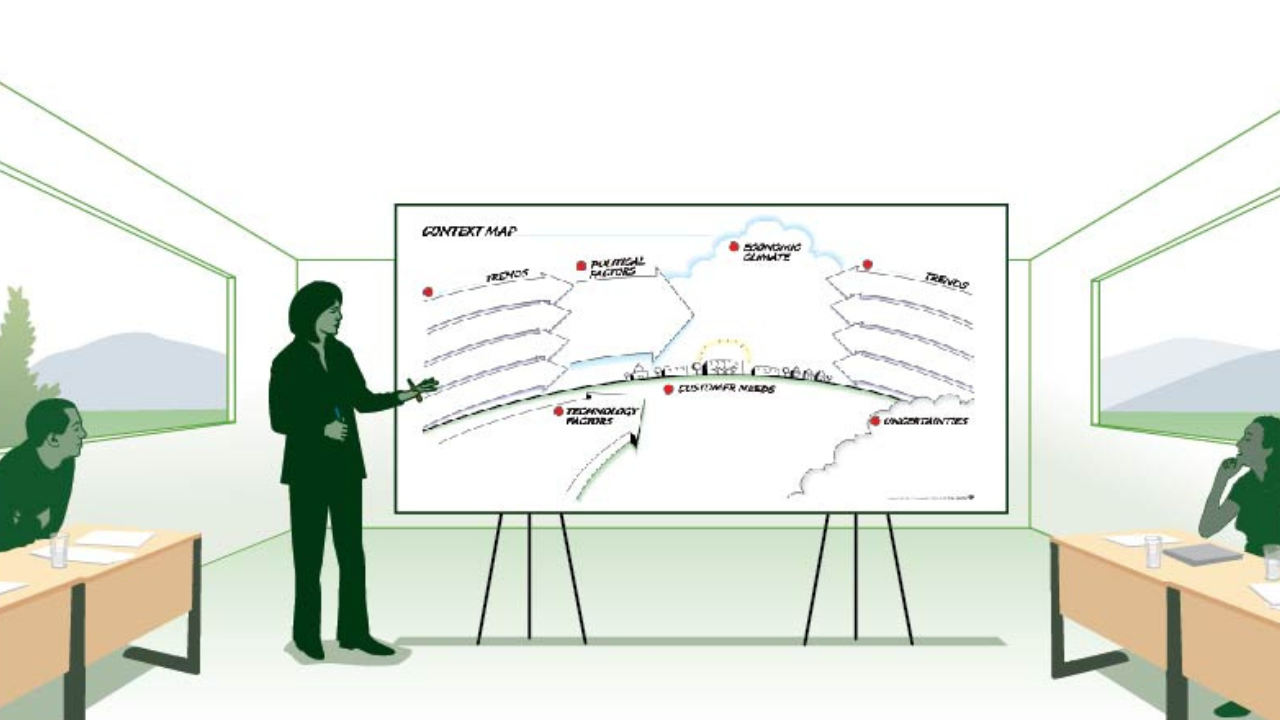Jumpstart Your Strategy with the Context Map
Sep 13, 2023
Understanding your organization’s environment and how this environment changes is critical for success in your planning process. This is a perfect time to have a visual planning session, using templates to provide a high-level view of all the factors that affect your situation.
In this article, we provide a step-by-step process for using The Context Map, one of 20 different graphic templates that we use repeatedly with our clients to support their strategic planning. This visual template provides a unique opportunity to examine assumptions and understand the factors, trends and forces influencing your team's work and decisions.
The Context Map should be used at critical stages in planning to enable dialogue about the external environment and provide a solid team-building experience. The group gets a chance to sharpen its understanding of cross-road issues, thereby improving planning and decision-making.
General Preparation
The Context Map can be used for either one group or breakout groups of three to seven people. The following steps are written for a facilitator working with one group. Explain that this is a brainstorming activity. It is not critical that the group reach agreement about all trends, issues and needs—record differences for future consideration.

Step 1: Introduce the Process
Review the layout and categories of the Context Map. Spend as much time as needed to gain clarity and agreement on the categories. Make any changes needed, or add categories in the margins of the categories.
Step 2: Identify Trends
Begin by asking about current trends. Use open-ended questions linked to your chosen categories. Remember, the point of the activity is not to create an art piece, but to create an opportunity for conversations that eventually lead to shared understanding.
Step 3: Describe The Climate
Ask the group about the overall climate by focusing on the economic factors first. Note major uncertainties by recording them in the cloud on the bottom right side of the chart.
Step 4: Examine Other Factors
Ask the group about other important factors, such as changes in the workforce, emerging customer needs, changes in the financial picture and so forth. Ask the group to fill in any areas that have not been covered.
Step 5: Reflect on Learning
When the Context Map is full, ask everyone to step back and reflect on what was learned. Did any revelations or surprises result from viewing the whole map?
Step 6: Bring To Closure
Clarify next steps by building on the analysis of the Context Map session. If there will be follow-up, make assignments or agreements. Capitalize on the momentum generated.

The Context Map should be used at critical stages in planning to enable dialogue about the external environment and provide a solid team-building experience. It also provides a neutral record that faithfully represents whole- group understandings—thereby improving planning and decision-making.
This article has been adapted from our Context Map Leader’s Guide. Visit Grove Tools for all of our Graphic Guides and Leader's Guides.
Learn a visual, templated method for strategic planning and get an in-depth understanding of our Strategic Visioning process in our Strategic Visioning Workshop.
Familiarize yourself and your team with the Strategic Visioning Model by downloading this free overview with simple descriptions of the seven stages of the Strategic Visioning process.
Need professional guidance for your strategic planning process? Find out about our Visioning and Strategic Planning consulting and how we can help your organization.
